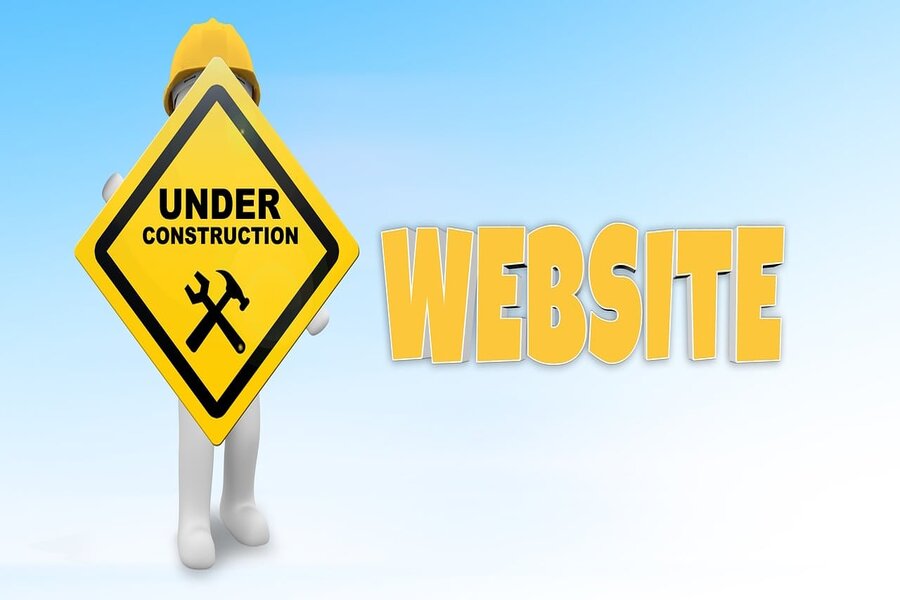The Affiliate Engine website was more than just another digital asset for Helios Live. It was essential to our business as a whole. This online platform was producing up to $1,500 per month at the time, which was a significant sum for the business. Until the $10,000 mistake: a website transition gone wrong.
Affiliate Engine played a pivotal role in realizing Helios Live’s foundational vision—to continuously grow affiliate revenue. However, this valuable asset became the focus of an ambitious endeavor that would lead to a costly mistake.
Background and Significance
Affiliate Engine was not just some website sitting there doing nothing. It was a source of growth in terms of both potential and actual earnings. Its significance lay not only in the traffic it attracted but also in the revenues it generated.
It possessed the unique ability to convert online traffic into a tangible income stream. Its average monthly contributions of $1,500 were certainly not insignificant. Rather, they constituted a substantial portion—roughly 50-60%—of the company’s income at that time.
Reasons for Transition
An unexpected but alluring offer was a driving factor in the shift. From the annals of serendipity emerged a client from another business who, in a spontaneous and specific request, sought to leverage Helios Live’s expertise in promoting websites.
There was more to this client’s request than just an opening. It had the potential to completely alter the playing field. It presented the prospect of deploying Helios Live’s proven strategies and capabilities to not just one but two online properties.
At the time, this seemed like a golden opportunity—a chance to harness more resources, broaden our portfolio, and diversify our revenue streams. The opportunity to work in and learn from two separate “yards” was too good to pass up. Because of this, we have decided to use our promotional knowledge to help a company outside of the Affiliate Engine network.
Helios Live, however, was not content to limit this newfound capability to a single customer. Recognizing the importance of a sound business model and the need to reach a broader audience, the company opted to embark on a broader transformation.
We decided to update the Affiliate Engine website and position it as a showcase for our expanded range of services, catering not only to one client but also signaling our availability to other businesses seeking similar support.
Migration Goals and Plan
The Affiliate Engine website was migrated so that it could serve as a window into Helios Live’s growing portfolio of offerings. This vision was not merely about a cosmetic facelift. It aimed to reframe the very essence of the website, making it a genuine mirror of the company’s internal operations and capabilities.
- Centralized Service Showcase: At the core of the plan was the idea to have a central hub—a main page—dedicated to showcasing the services Helios Live offered.
- Content Silos for Added Value: To ensure that the website provided substantial value to various industries, the plan included the creation of content silos.
- Transitioning the Previous Homepage: It was no longer to be the primary entry point but rather find its place within one of the content silos, harmonizing with the overarching objective of serving as a comprehensive resource center.
The overall objective was to design a user-friendly website that not only showcased Helios Live’s products and services but also met the informational needs of our varied clientele. The goal was to design a website that reflected the company’s growth and its willingness to offer services beyond those initially envisaged by the Affiliate Engine.
Execution Phase
The procedure was as follows:
- Selecting a New Theme: Careful consideration went into choosing a theme that would align with the company’s objectives and offer the flexibility needed to showcase our expanding range of services.
- Creating a New Website: This was a comprehensive endeavor that involved crafting a fresh digital presence, meticulously designed to convey our evolving identity and service offerings.
- Content Migration: This included not just textual content but also multimedia elements and the architecture that underpinned the site’s functionality.
- A Critical Import Mistake: Unfortunately, a critical mistake occurred during the content import stage. This mistake was not immediately apparent, and its consequences would only reveal themselves in due course.
The core of the problem was the fact that the website switch was not a simple upgrade. It amounted to the creation of a completely new website. A lot of the old site’s careful configuration, which relied on a wide variety of plugins interacting with one another to produce the desired effect for the user, was lost in the transition. It was a blind spot that would pose a serious problem.
Furthermore, the situation was made more complicated due to the unintended outcomes that resulted from this error. Helios Live hadn’t anticipated losing a substantial portion of the traffic directed toward the inner pages of the website.
This happened for several reasons. Firstly, most of the affiliate links on the site went dormant during the transition, and the systems that alerted to these issues also ceased to function. Second, the disorganized state of the site meant that users frequently encountered errors that sent them back to search engines.
As a result, this disruption severely affected the organic traffic flow to the site. Soon, the income the website generated from affiliate links became zero.
Lessons Learned and Improvements
The necessity of thorough testing was brought to light as one of the most important lessons learned. During the website transition gone wrong, automated testing procedures were heavily relied upon. However, they were later found to be insufficient and flawed. They failed to catch critical issues that had severe consequences.
As a response, Helios Live has instituted a comprehensive approach to testing. Now, before and after any significant changes or website migrations, the team engages in thorough manual and semi-manual testing.
This hands-on method ensures that all critical functions, from the very first potential failure point to the very last, are examined. The point is to spot problems before they become major headaches for your company.
To further fortify testing and quality control processes, Helios Live has adopted a practical strategy—a “Top 10 Feature Checklist.” Before and after migrations, the team identifies and documents the ten most critical features and functionalities of the website. These are crucial parts that must be protected at all costs.
After any modifications have been made, they are inspected thoroughly to make sure they continue to function as intended. This approach adds a layer of security and scrutiny to the transition process, with a focus on safeguarding the core elements that drive user experience and revenue generation.
In retrospect, Helios Live recognizes that one of the most straightforward and effective ways to prevent costly mistakes like the website transition gone wrong is to adhere to a principle rooted in pragmatism: “If it ain’t broken, don’t fix it.” In the case of the Affiliate Engine website, maintaining the existing site’s functionality and integrity while creating a dedicated platform for new services would have likely been a more efficient, resource-friendly, and profitable approach.
Recommendations for Others
For companies embarking on similar shifts, Helios Live offers the following recommendations based on our hard-earned lessons:
- Prioritize Testing: Rigorously test every aspect of the website before and after transitions. Do not rely solely on automated procedures; manual and semi-manual testing is essential.
- Identify Critical Features: Document and monitor the top 10 most critical features and functionalities of your website. Ensure they remain operational during and after transitions.
- Visual Inspection: After a transition, conduct a visual inspection of as many pages as possible. Randomly sample them to ensure functionality and design integrity.
- Crawl and Validate: Perform automated crawls, including external backlinks, before and after transitions. Address any issues that arise promptly.
- Maintain What Works: Consider the “If It Ain’t Broken, Don’t Fix It” principle. Preserve existing functional elements when implementing changes, and create dedicated platforms for new initiatives.
Current Status and Future Plans
At present, the Affiliate Engine website finds itself in a state of recovery after the transition gone wrong. While it had faced a substantial setback due to the $10,000 mistake, the team at Helios Live remains committed to revitalizing this once-reliable revenue stream.
The site can be likened to a patient on life support—showing signs of life and gradual improvement. However, we must not gloss over the fact that getting better has been a slow and difficult process. The critical errors during the transition process inflicted significant damage, not just in terms of functionality but also with regard to the loss of traffic and revenue.
Helios Live wants to fix the Affiliate Engine website and make it more resilient and adaptable. The recovery plan involves several key elements:
- Audience Building and Education: The new focus is on building a dedicated and engaged audience. Instead of relying solely on affiliate marketing commissions, Helios Live aims to cultivate a community of users seeking valuable insights and guidance.
- Value-Oriented Premium Offerings: As audience grows and trust is established, Helios Live envisions offering premium services and resources that users can opt for after they have benefited from the free value provided.
- Leveraging Downward Momentum: It serves as a catalyst for a complete reevaluation of focus and monetization model, prompting us to rethink our strategic direction in a way that aligns with our newfound vision.
Conclusion
The Affiliate Engine website, once a reliable revenue source, is being revitalized with an emphasis on audience building and education. The focus has shifted from immediate affiliate commissions to a model centered on offering real value, trust, and eventually premium offerings.
If there is one thing to take away from this whole ordeal, it is the importance of taking your time and doing proper planning and testing before making any major changes to your website. These phases are not mere formalities but critical safeguards against costly errors.
Helios Live’s story of the website transition gone wrong shows that even a small slip-up can have serious repercussions for any business and turn into a $10,000 mistake.




